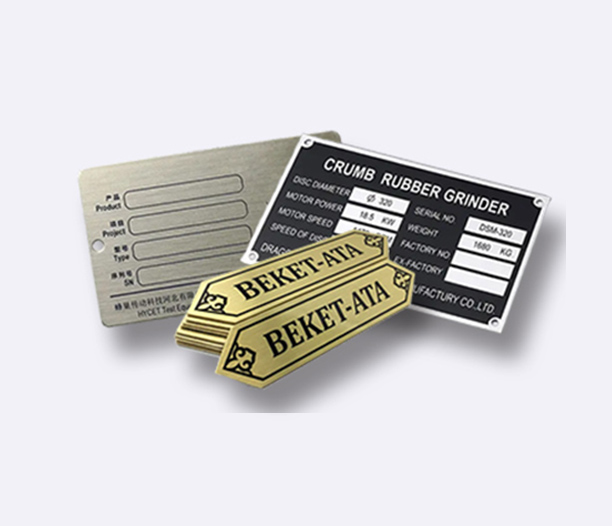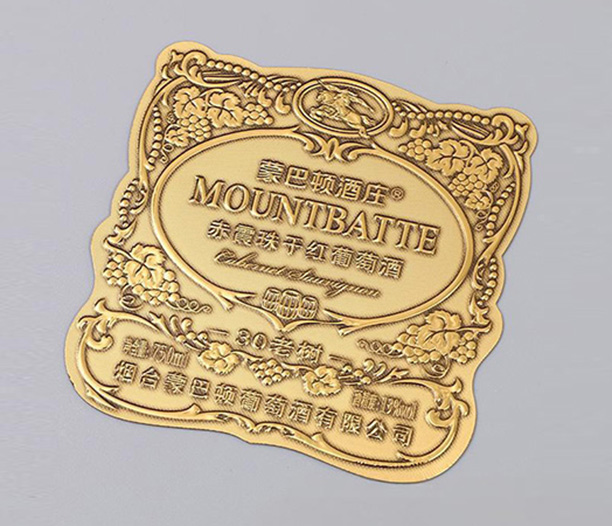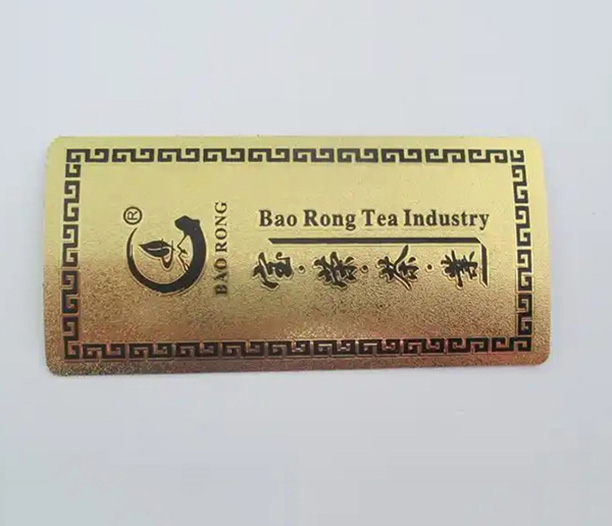In industrial, manufacturing, and various harsh environment settings, the ability to reliably identify assets, products, and components is not just a convenience—it's a critical necessity. This is where the specialized world of permanent labels for metal comes into play. Unlike standard stickers or tags, these labels are engineered to withstand extreme conditions, including high temperatures, chemical exposure, abrasion, and outdoor weathering, all while maintaining legibility and adhesion. Whether for asset tracking, safety warnings, compliance labeling, or brand identification, selecting the right permanent labels for metal can significantly impact operational efficiency, safety, and longevity. This comprehensive guide will explore the seven essential factors you must consider to ensure you choose the most effective and durable labeling solution for your metal surfaces.
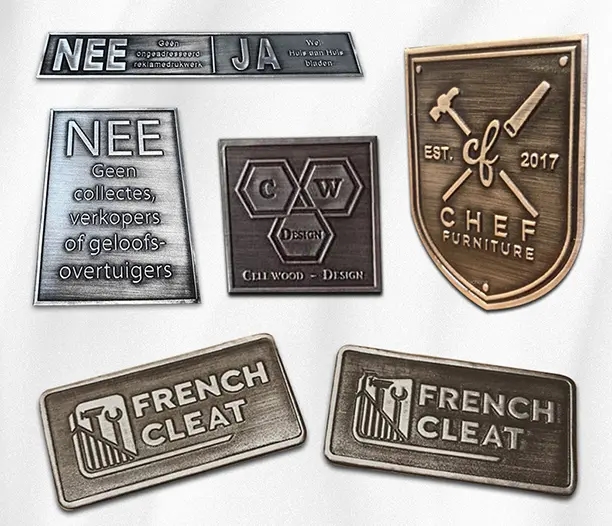
Understanding the Critical Applications of Permanent Labels for Metal
Permanent labels for metal are not a one-size-fits-all solution; they serve a multitude of vital purposes across diverse industries. Their robustness makes them indispensable in environments where failure is not an option.
Asset Tracking and Identification: In warehouses, factories, and construction sites, heavy machinery, tools, and equipment are valuable assets. Metal labels with barcodes, QR codes, or unique serial numbers enable efficient tracking, maintenance scheduling, and inventory management throughout an asset's lifecycle.
Safety and Compliance: The safety of personnel is paramount. Permanent labels for metal are used to create durable safety warnings, hazard alerts, and operational instructions on machinery, electrical panels, and pipelines. They are often designed to meet specific regulatory standards (like OSHA, ANSI, or ISO), ensuring critical information remains intact and readable.
Branding and Product Information: Manufacturers of metal products, from consumer appliances to industrial components, use high-quality metal nameplates and labels to display logos, model numbers, serial numbers, and technical specifications. This enhances brand perception and provides essential information that lasts as long as the product itself.
Aerospace, Automotive, and Defense: These sectors demand the highest levels of durability and performance. Labels must endure extreme temperatures, fuels, solvents, and vibration without degrading. Permanent labels for metal in these fields are critical for part identification, maintenance logs, and safety.
Outdoor and Architectural Use: For outdoor equipment, signage, and architectural elements, labels must resist UV radiation, moisture, and wide temperature fluctuations. Permanent metal labels ensure that identification and information remain clear for years, even in direct sunlight and harsh weather.
Material Technologies Behind Durable Permanent Labels for Metal
The durability of a label is fundamentally determined by its material composition. The most common and effective materials used in creating permanent labels for metal include:
Anodized Aluminum: This is a premier choice for durability. Aluminum is electrochemically treated to create a hard, non-corrosive surface that is highly receptive to printing. These labels are lightweight, resistant to chemicals and abrasion, and can withstand high temperatures. They are often used for high-end nameplates and industrial identification plates.
Stainless Steel: For the most extreme environments, stainless steel labels are the go-to option. They offer exceptional resistance to corrosion, high heat (often in excess of 1000°F), and physical impact. They are ideal for applications in chemical processing, pharmaceutical manufacturing, and high-temperature machinery.
Polyester and Polyimide Films: These engineered synthetic materials offer a flexible yet incredibly tough alternative. They are typically coated with aggressive acrylic adhesives.
Polyester (PET): Known for excellent chemical and abrasion resistance, and good performance across a wide temperature range (e.g., -40°F to 300°F). It is a cost-effective and highly versatile option.
Polyimide (Kapton): Famous for its exceptional thermal stability, often enduring temperatures from -269°C to 400°C (-452°F to 752°F). It is widely used in electronics and aerospace applications where soldering temperatures are involved.
Metallized Polyester: This material combines the flexibility and printability of polyester with a metallic appearance. It provides a cost-effective solution that offers the look and feel of metal with the added benefits of a synthetic film.
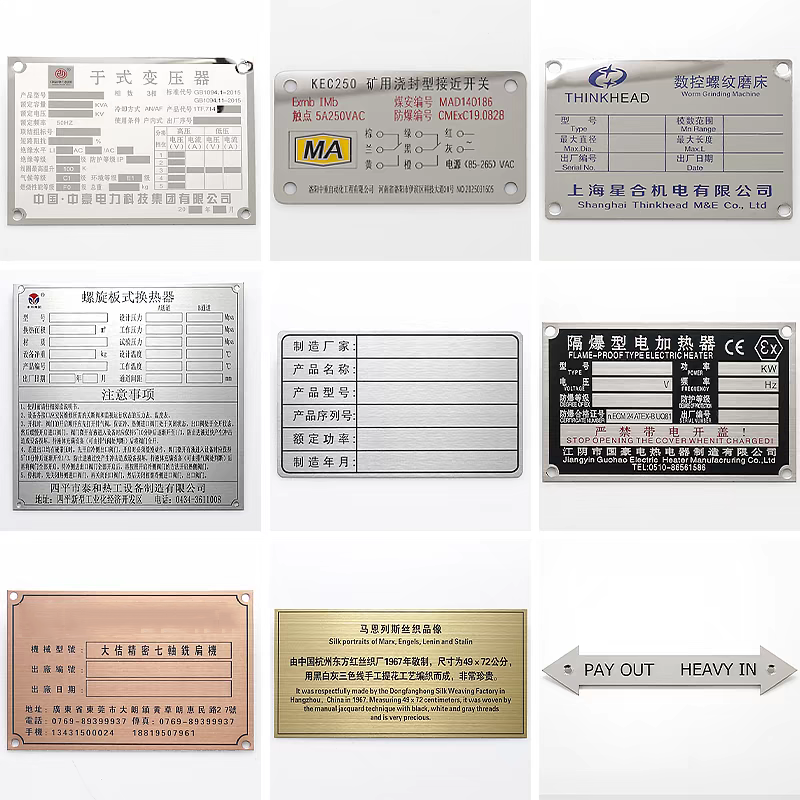
Adhesive Science: Ensuring Your Metal Labels Stay Permanent
A label is only as strong as its bond to the surface. The term "permanent" directly refers to the adhesive's performance. Selecting the right adhesive is crucial for the success of any permanent labels for metal application.
Acrylic Adhesives: These are the most common type used for permanent applications. They offer a strong balance of adhesion, environmental resistance, and longevity. They are available in different formulations:
Standard Permanent Acrylic: Provides strong initial tack and good holding power for most indoor applications.
High-Performance Acrylic: Designed for challenging surfaces like rough, textured, or low-surface-energy metals. They offer superior ultimate adhesion, often developing stronger bonds over 24-72 hours.
Silicone Adhesives: These are specialized for extreme high-temperature applications. While they typically have lower initial tack than acrylics, they maintain their integrity and adhesion under continuous exposure to temperatures exceeding 500°F (260°C) and even brief spikes much higher.
Epoxy-Based Adhesives: These are often used in two-part systems for mechanical nameplates that are riveted or screwed on, but they can also be pre-applied. They create an exceptionally strong, almost unbreakable bond, but application can be more complex.
Surface Preparation: The effectiveness of any adhesive depends on a clean, dry surface. Oils, dirt, moisture, and rust prevent proper contact. Surfaces must be cleaned with a solvent like isopropyl alcohol to ensure the permanent labels for metal achieve their designed bond strength.
Printing and Marking Methods for Long-Lasting Legibility
The information on the label must be as durable as the label itself. Several printing technologies are used to create indelible markings on permanent labels for metal.
Screen Printing: A traditional method where ink is forced through a fine mesh screen onto the label material. It produces vibrant, opaque colors and very thick, durable ink layers that are highly resistant to chemicals, abrasion, and fading. Ideal for simple graphics and text in high volumes.
Digital Printing (UV Inkjet): This modern method offers incredible flexibility for variable data (like sequential barcodes or unique QR codes) and full-color graphics. UV-curable inks are instantly dried by ultraviolet light, creating a tough, durable, and chemical-resistant surface. It is perfect for short to medium runs and highly customized labels.
Photo Anodization: A process specific to anodized aluminum. The design is photographically etched into the anodic layer, and then dyes are infused into the porous surface. The surface is then sealed, making the marking an integral part of the metal itself. This results in unparalleled durability and a high-end appearance.
Chemical Etching: Used primarily for stainless steel and aluminum labels. The design is etched into the metal using acids or lasers, creating a permanent, deep mark that is immune to wear. It can be left as-is or filled with colored enamel for contrast.
Laser Marking: A direct-part marking method where a high-powered laser alters the surface of the metal to create a high-contrast, permanent mark. While not a "label" in the traditional sense, it achieves the same goal of permanent identification for metal by making the metal itself the label.
Environmental and Performance Standards for Metal Labels
In many industries, labels must not only be durable but also comply with specific performance standards. Understanding these certifications helps in selecting the right product.
UL/CSA Recognition: Underwriters Laboratories (UL) and Canadian Standards Association (CSA) have standards for printed materials used on electrical equipment. Labels might need to be UL 969 recognized, meaning they have been tested for legibility and adhesion after exposure to specific environmental conditions.
Military Specifications (MIL-STD): The U.S. Department of Defense has rigorous standards for identification labels used on military equipment (e.g., MIL-STD-130). This governs everything from content and format to durability requirements.
RoHS/REACH Compliance: These European regulations restrict the use of certain hazardous substances. Labels and their adhesives must be manufactured without restricted substances like certain phthalates or heavy metals to be compliant for use on products sold in the EU.
Chemical Resistance: Labels can be tested against specific chemicals like solvents, acids, and alkalis to ensure the print and material will not degrade upon exposure common in laboratory or industrial settings.
Temperature and Weathering Ratings: Manufacturers provide data on the continuous and peak temperature ranges a label can withstand, as well as ratings for UV stability and water resistance (often using IP codes or ASTM weathering tests).
Best Practices for Applying and Maintaining Permanent Labels on Metal
Proper application is the final step in ensuring a label performs as intended. A poorly applied label, even the best one made, will fail.
Surface Preparation: This is the most critical step. The metal surface must be completely clean, dry, and free of dust, oil, grease, rust, and old adhesive residue. Use a lint-free cloth and a solvent like isopropyl alcohol for cleaning.
Application Temperature: Apply labels in an environment within the recommended temperature range, typically between 60°F and 80°F (15°C and 27°C). The adhesive and the surface should not be too cold or too hot.
Application Pressure: Use a firm, consistent pressure across the entire surface of the label to ensure full contact with the metal. A squeegee or roller is highly recommended to eliminate air bubbles and activate the adhesive.
Curing Time: While the label will have immediate tack, most high-performance acrylic adhesives require 24-72 hours to achieve their full "permanent" bond strength. Avoid exposing the label to harsh chemicals, washing, or abrasion during this period.
Regular Inspection: As part of a preventative maintenance program, periodically inspect critical labels for signs of edge lifting, fading, or damage. Proactive replacement ensures information is always available.
How to Choose the Right Supplier for Your Permanent Metal Labels
Selecting a reliable supplier is as important as selecting the right label. A partner, not just a vendor, will ensure you get the optimal solution.
Expertise and Experience: Look for a supplier with a proven track record in your industry. They should have application engineers who can ask the right questions about your environment and requirements.
Customization Capabilities: Your needs are unique. The supplier should offer full customization—from material and adhesive selection to size, shape, and printing method—rather than forcing you into a limited set of stock options.
Testing and Certification: A reputable supplier will be able to provide test data and certifications for their materials and will often offer in-house testing to validate performance for your specific application.
Quality and Consistency: Inquire about their quality control processes. Consistency in material quality, print clarity, and adhesive performance from batch to batch is essential for reliable application and scanning (for barcodes).
Technical Support: Choose a supplier that offers strong customer and technical support to help you troubleshoot application issues or select the right product for a new, challenging application.
Investing in the right permanent labels for metal is an investment in efficiency, safety, and asset management. By carefully considering the seven factors outlined—application, material, adhesive, printing method, environmental standards, application practices, and supplier selection—you can make an informed decision that delivers long-term value. The goal is to ensure that the critical information on your metal assets remains清晰, secure, and legible for the entire lifespan of the product, enduring whatever challenges your operational environment presents. Don't settle for a label that might fail; choose a solution designed for permanence.



